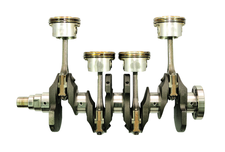Mozilla adds multiprocessing with Electrolysis in Firefox 54
Four Cylinders

© Lead Image © Karols Stefan Sobolewski, 123RF.com
Developers are praising Firefox 54 as the "best Firefox ever." The revamped web browser adds multiprocessing and promises a significant boost in speed.
In the mid-1990s, Netscape Navigator was the leading web browser, but when Microsoft decided to bundle Internet Explorer (IE) with the Windows operating system, the tide began to turn. After years of competition (and litigation), Redmond lost the antitrust case, but won the browser war. At its peak, IE had an 80 percent share of the browser market. But the Mozilla project, which was built from remnants of Netscape, bounced back with Firefox. The Firefox browser has had a long and glorious run, attracting up to 48 percent of the market at its peak, including many Windows users who opted for Firefox because they just liked it better than IE [1].
Firefox's fortunes have waned in recent years. Chrome has emerged as the leading third-party browser alternative, with Firefox market share falling somewhere in the range of 11 to 14 percent. Part of the change is the ordinary dynamics of the software development lifecycle. An application is designed for the time in which it is built, with state-of-the-art programming techniques and implicit assumptions about the state of available hardware. As the world changes, the software continues to receive updates, but a large-scale overhaul is never easy midstream, especially for an application with millions of users.
Chrome was built later and isn't showing the same signs of age. IE is definitely aging, but Microsoft solved the problem by replacing IE with a whole new browser – the Microsoft Edge browser, which debuted with Windows 10.
[...]
Buy this article as PDF
(incl. VAT)
Buy Linux Magazine
Subscribe to our Linux Newsletters
Find Linux and Open Source Jobs
Subscribe to our ADMIN Newsletters
Support Our Work
Linux Magazine content is made possible with support from readers like you. Please consider contributing when you’ve found an article to be beneficial.

News
-
Parrot OS Switches to KDE Plasma Desktop
Yet another distro is making the move to the KDE Plasma desktop.
-
TUXEDO Announces Gemini 17
TUXEDO Computers has released the fourth generation of its Gemini laptop with plenty of updates.
-
Two New Distros Adopt Enlightenment
MX Moksha and AV Linux 25 join ranks with Bodhi Linux and embrace the Enlightenment desktop.
-
Solus Linux 4.8 Removes Python 2
Solus Linux 4.8 has been released with the latest Linux kernel, updated desktops, and a key removal.
-
Zorin OS 18 Hits over a Million Downloads
If you doubt Linux isn't gaining popularity, you only have to look at Zorin OS's download numbers.
-
TUXEDO Computers Scraps Snapdragon X1E-Based Laptop
Due to issues with a Snapdragon CPU, TUXEDO Computers has cancelled its plans to release a laptop based on this elite hardware.
-
Debian Unleashes Debian Libre Live
Debian Libre Live keeps your machine free of proprietary software.
-
Valve Announces Pending Release of Steam Machine
Shout it to the heavens: Steam Machine, powered by Linux, is set to arrive in 2026.
-
Happy Birthday, ADMIN Magazine!
ADMIN is celebrating its 15th anniversary with issue #90.
-
Another Linux Malware Discovered
Russian hackers use Hyper-V to hide malware within Linux virtual machines.

